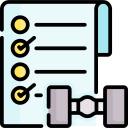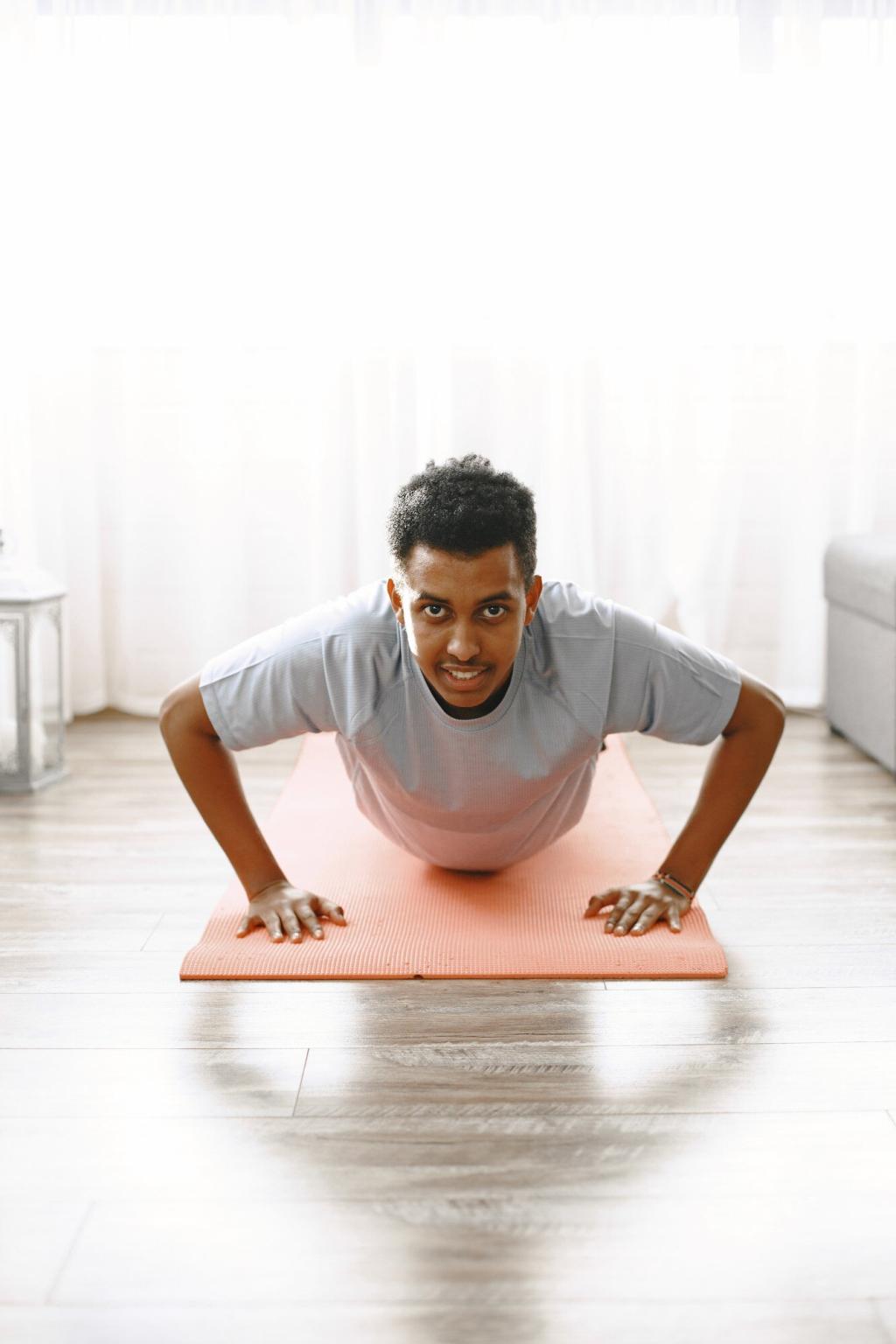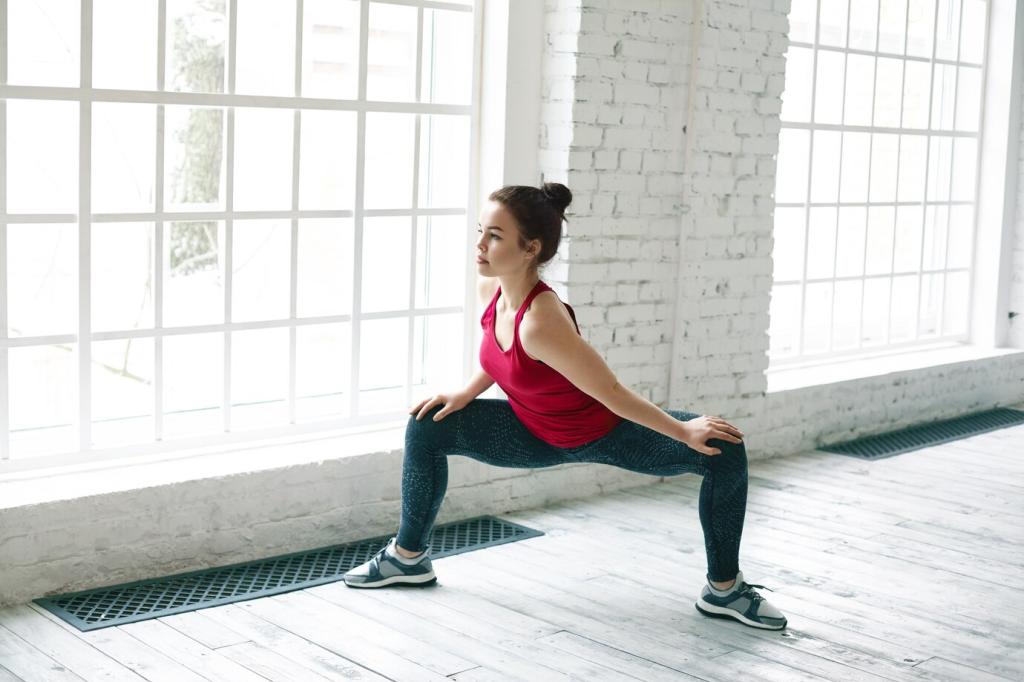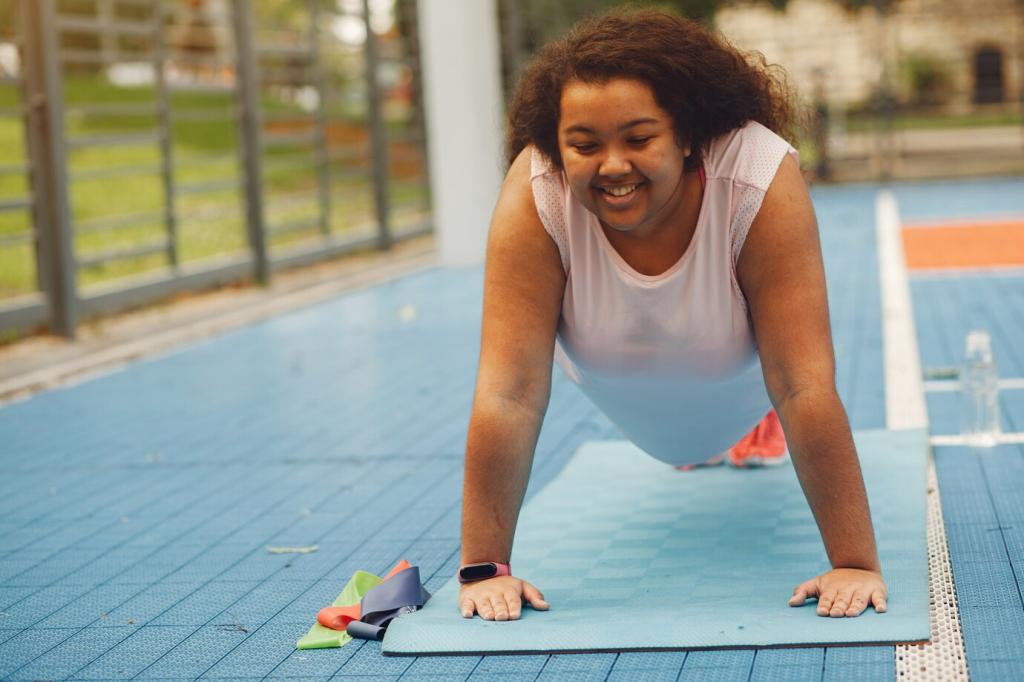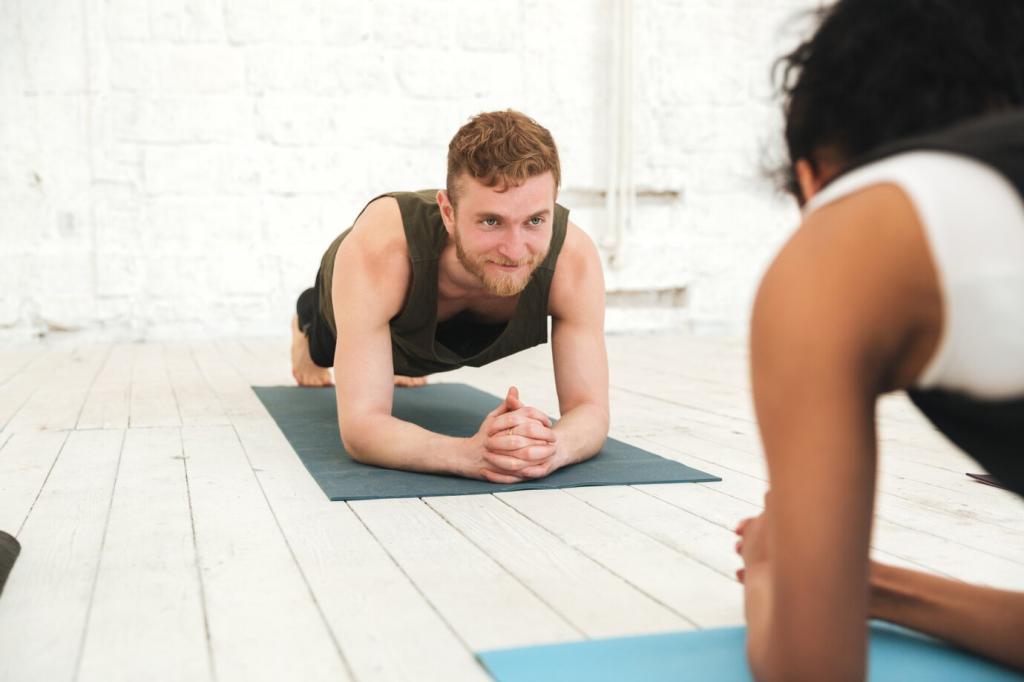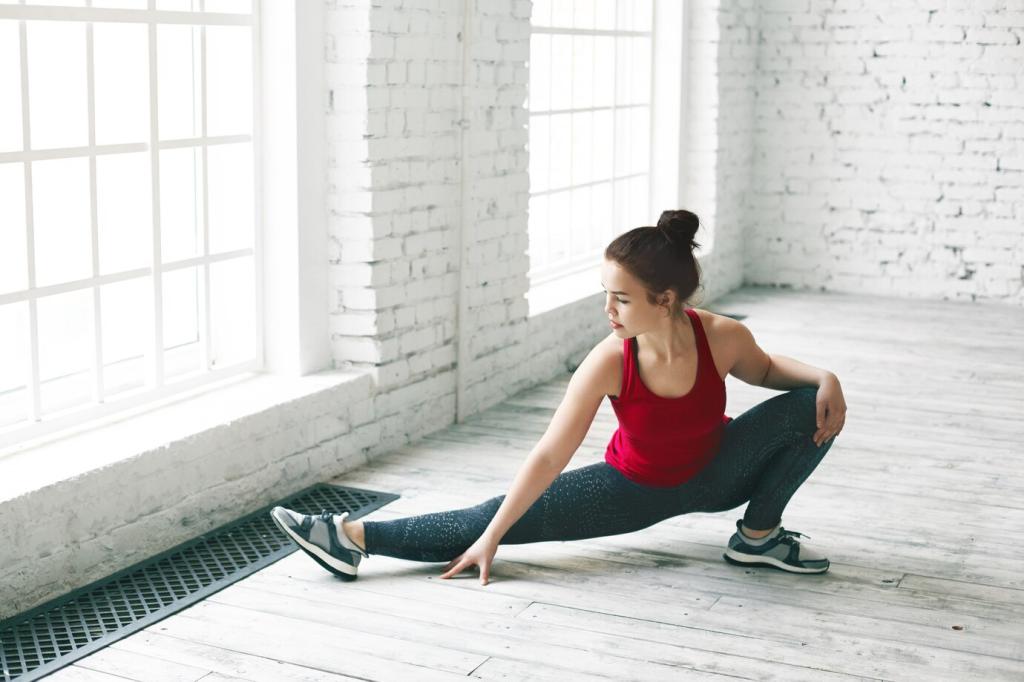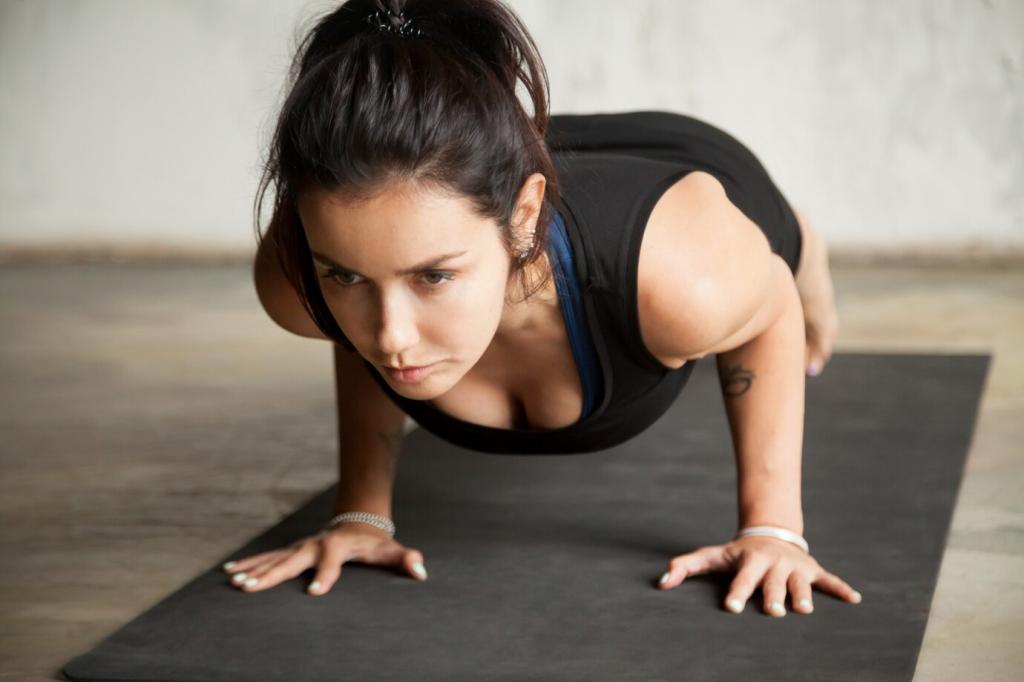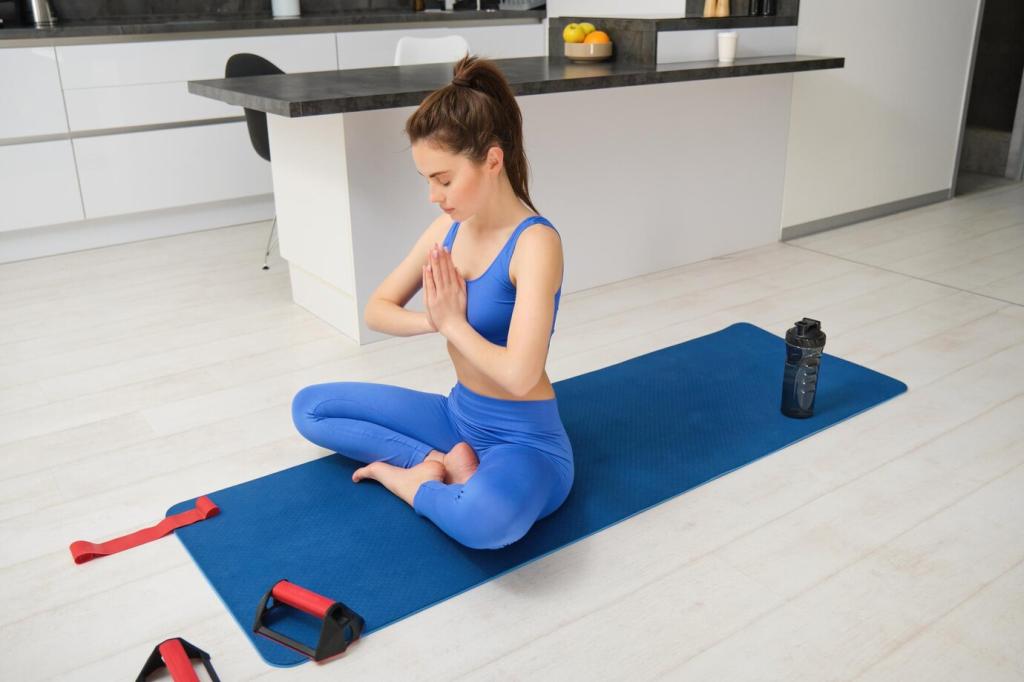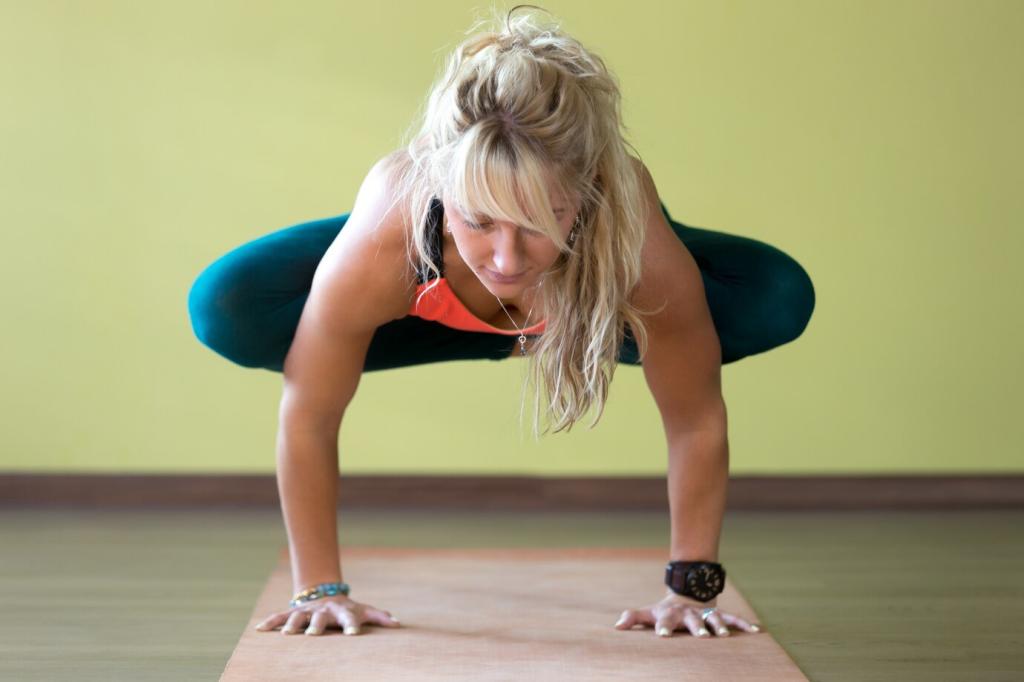A 20-Minute Beginner Flow You Can Repeat
Two minutes of diaphragmatic breathing, then gentle neck circles and shoulder rolls. Move only within comfort. Imagine polishing away desk stiffness. Take a photo of your relaxed shoulders afterward and share your before/after feeling—others need proof that small steps work.
A 20-Minute Beginner Flow You Can Repeat
Cycle Cat–Cow for five breaths, then step to Low Lunge each side with long, easy exhales. Keep knees padded. This wakes hips without strain. Did your balance wobble? That’s data, not failure. Comment which side felt tighter so we can suggest side-specific releases.
